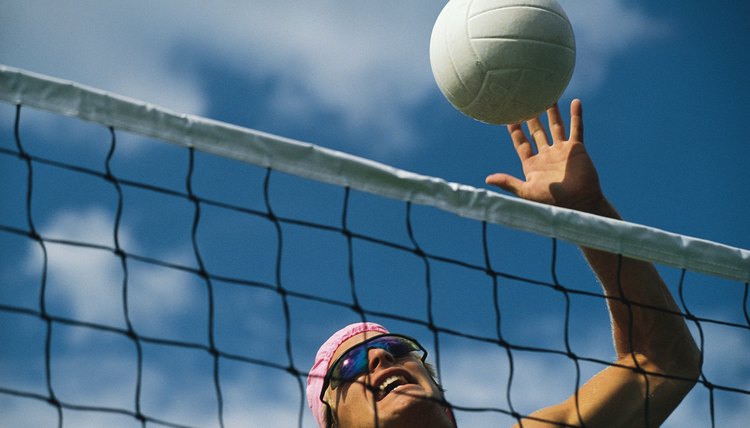How to Fix a Volleyball Leak

The sport of volleyball was invented in 1895; the current volleyball came into use in 1900. Similar to bicycle tires, volleyballs have an inner bladder (which can develop a leak no larger than a puncture hole) covered by a durable outer layer (which can split and eventually cause a leak in the inner bladder). Rather than buy a new ball, determine where the leak is coming from. You can usually fix it using a few easy steps.
Leaks on the Inside
Identify where the leak is by submerging the ball in a bucket of water. Slowly turn the ball and look for bubbles in the water that come from the ball. If no bubbles appear, you may not have a leak and simply need to reinflate the ball.
If there is a leak, fill a syringe with athletic ball sealant and inject the sealant into the volleyball. Follow the manufacturer’s instructions for the amount of sealant to inject; typically, 1/2 oz. to 1 oz. suffices. You can find this sealant at sporting goods stores. Some sealants come with their own insertion valves; you may not need your own. Athletic ball sealant is flexible and conforms to the inner bladder to maintain the spherical shape of the ball.
Insert the needle on the air pump into the ball and inflate until the ball reaches the desired hardness. The standard PSI for volleyballs ranges from 4.26 to 4.61.
Bounce the ball several times to test the inflation.
Splits on the Outside
Place the ball in a bucket full of water. Rotate the ball until you see bubbles form in the water, on the ball, to show you where the leak is.
Place your finger on the split and remove the ball from the water. Dry the area around the leak and place a piece of duct tape next to the tear. Use the towel to manually dry the rest of the ball or let it air dry. Allow the area around the split to dry completely. Keep the tape on the ball to mark the spot.
Apply a thin layer of rubber cement or tubular glue over and around the split. You can find this kind of glue at home improvement stores, bike shops and many convenience stores.
Place the bike tire patch over the rubber cement or glue. Press down with your fingers to smooth the patch on the ball. Be sure all edges are firmly attached.
Insert the needle of the air pump into the volleyball and inflate it as desired.
Tips
If you determine the leak is coming from the needle valve area, use the athletic ball sealant. It will seal that area as well as any leaks of the inner bladder.
Tips
- If you determine the leak is coming from the needle valve area, use the athletic ball sealant. It will seal that area as well as any leaks of the inner bladder.
Writer Bio
After attending the University of Missouri St. Louis, Stephanie Rempe worked as a documentation manager in the finance industry 10 years before turning to her first love, writing, which she's been doing professionally since 2008. She currently divides her time between Missouri and her fiance's hometown in Oregon. In addition to her freelance writing, Rempe is working on a romance novel and short stories.
